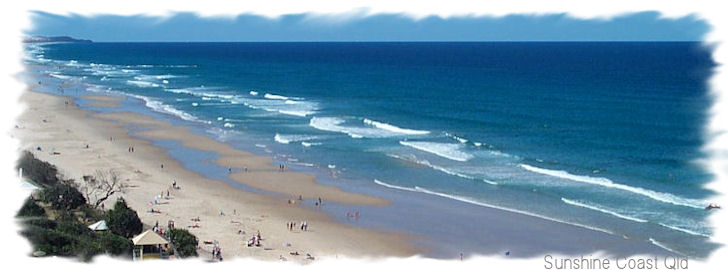Queensland is our second largest state covering 1,727,200 square kilometres in the continent’s north east corner. Half the population lives in Brisbane which is locally referred to as Briz Vegas.
World famous natural features have earned the Sunshine State a reputation as a premier holiday destination by Australians and internationals. Two thirds of the State is in the tropics with the north east coast subject to monsoon conditions from November to April (Wet Season).
The south east corner is subtropical and has warm humid summers tempered by sea breezes while outback Queensland is hot and dry. Best times to visit the state is between May and October.
The Queensland coast was first sighted by the Dutch in 1606 but it was the British who established a settlement at Moreton Bay in 1824. The district was opened to free settlers from 1842 and it became a colony in 1859. There was much conflict between the colonists and the local indigenous population and in 1897 confined the aboriginals to mission stations and government reserves.
The city of Brisbane (proclaimed in 1902) straddles the lazy curves of the Brisbane River, Moreton Bay and Stradbroke Island provide a barrier to the Pacific Ocean creating a calm body of water at its foreshore. The hinterland provides a beautiful backdrop for the city.
Brisbanites are a resilient group of people showing amazing courage during and after the dreadful floods of 2010 that almost swept the city away.
DON’T MISS:
- Brisbane City Hall the architectural landmark of the city centre
- Fortitude Valley a lively inner city neighbourhood encompassing
- Chinatown and Brunswick Street Mall,
- Lone Pine Koala Sanctuary
- a day out on Moreton Bay,
- Mount Cootha Forest Park & Botanic Garden,
- Newstead House on the banks of the river,
- South Bank Parklands
TOP EVENTS
-
-
- Cricket tests at the GABBA
- Queensland Racing Carnival (May – June)
- Brisbane International Film Festival (August)
- The Ekka – Royal Brisbane Show (August)
- Spring Hill Fair (Sept)
- Energex Brisbane Festival (Oct)
- Livid Festival (Oct)
-
Wildlife Watching Daisy Hill State Forest on the southern outskirts of Brisbane supports a variety of animals including a colony of koalas.
Brisbane Forest Park houses nocturnal animals such as possums and sugar gliders. Moreton Island is a haven for dolphins, whales, dugongs and turtles.
The 2000 kilometre Great Barrier Reef brims with life: blue starfish, pink sponge, green turtle weed, needle coral, brain coral, mushroom coral, yellow trumpet fish, parrot fish, blue pillars, butterfly and angel fish.
At the Eungella National park near Mackay is home to the platypus which is best viewed at dusk. This place is also the southernmost loation of the cobalt-blue Ulysses butterfly. At night the place comes alive with nocturnal creatures.
Whalewatching can be enjoyed from Stradbroke Island right through to the Whitsundays.
Mon Repos Conservation Park near Bundaberg has the largest mainland turtle rookery.
Seven species of possum inhabit Mount Hypipamee National Park in northern Queensland.
A Tour to Remember:
Hinterland Adventure: Noosa Heads to Landsborough via the Glass House Mountains (150 km) 1-2 days will allow enough time to view the unexpected…. . that something special that makes your trip unique.
- Noosa Heads – the tour begins here in the fashionable Sunshine Coast.
- Eumundi – a 19th Century timber town that hosts colourful markets on Saturday mornings.
- The Ginger factory – watch ginger being processed, cooking demos, and purchase jams and other treats.
- Mapleton Falls National Park – the lookout is a 10 minute walk from the car park. The falls plunge 120 metres.
- Kondalilla National Park – a one hour return walk takes you through a diversity of vegetation, 100 bird species and water cascades.
- Montville – settled by citrus growers in 1887 the town is an arty crafty place with lots of eateries to choose from.
- From Montville to Maleny there are spectacular views in all directions. After leaving Maleny follow Maleny-Stanley Road into Mountain View Road. McCarthys Lookout will afford you your first view of the Glass House Mountains. Winding around the mountains and you’re on your way back to Landsborough.
